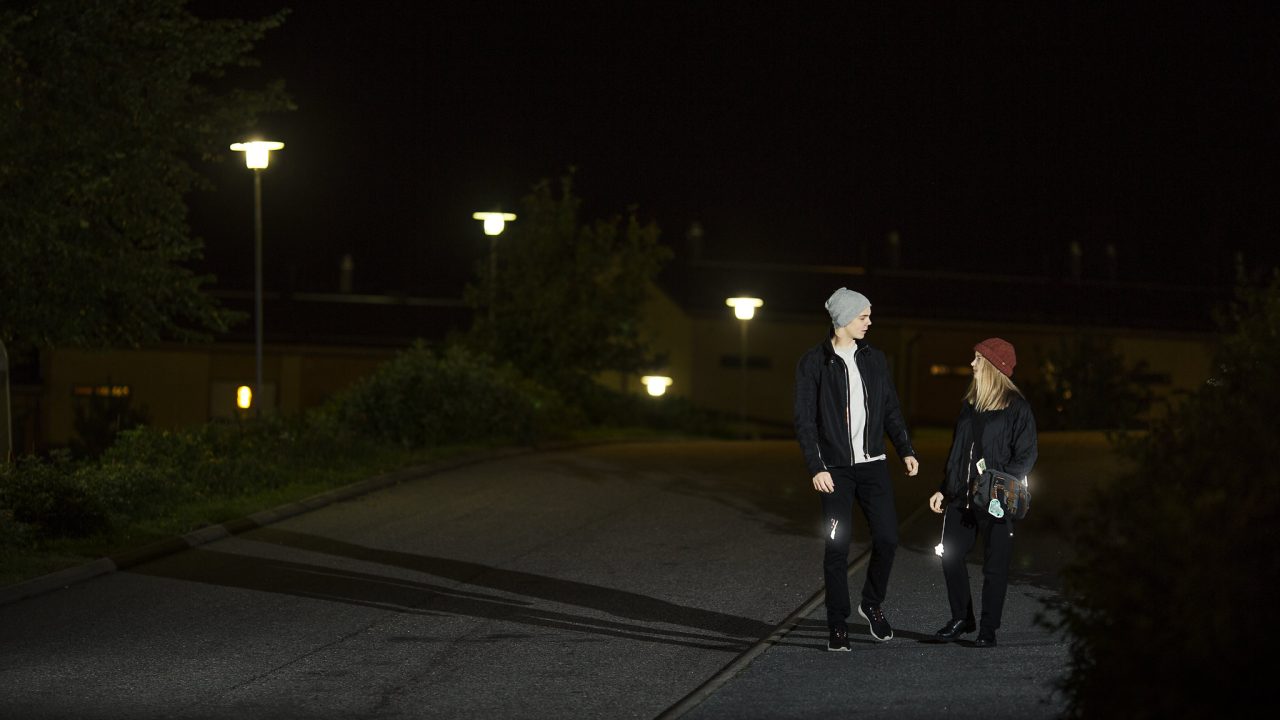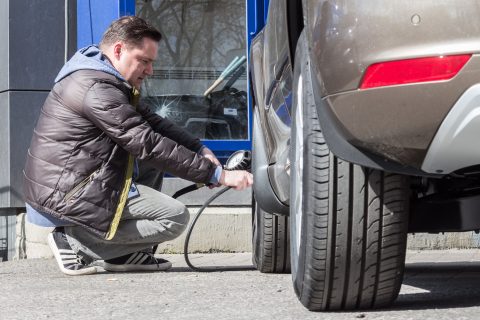
Reflectors improve pedestrian visibility
The winters in Finland are dark and long. The lack of light means a sharp drop in visibility. For drivers this means slower speed and extra vigilance especially in residential areas. Pedestrians and cyclists can improve their visibility with reflectros and reflective vests. A reflector reflects the light from vehicle headlights and helps its wearer to be seen.
Pedestrian visibility in the dark
On a dark road, a motorist driving with high-beam lights can see a pedestrian without a reflector at a distance of approximately 150 metres, depending on the pedestrian’s clothing and the lights of the vehicle. A pedestrian wearing a reflector or a reflector vest can be seen from a distance of more than 600 metres.
A driver driving with low-beam lights will detect a pedestrian without a reflector approximately 50 metres away. With a reflector the pedestrian can be seen as far as 350 metres away.
Reflectors improve pedestrian visibility also in lighted areas. Street and avdertising lights and the shadows of trees and bushes contribute to a challenging setting. Rain and fog impair the driver’s visibility even more. When driving it is important to take extra time and care to look for pedestrians and cyclists and adjust your speed so you have time to react and stop when needs be.

Pedestrian accidents in the dark
The road accident investigation teams (Opens in a new window) investigate all fatal road and off-road traffic accidents in Finland. In 2020 a total of 13 pedestrian accidents took place in the dark – this is over half of all pedestrian fatalities. Of the pedestrians who were killed in these accidents and whose use or non-use of a safety reflector had been recorded, seven were not wearing a safety reflector. Safety effect of reflector was evaluated in five cases. Based on these evaluations, two of these would have survived if they had worn a reflector.
The Finnish Road Safety Council monitors the use of reflectors yearly. Approximately one in two pedestrians wears a reflector. In 2021 the percentage was 52 %.
Attach your reflector correctly
According to the law, pedestrians should generally use a reflector in the dark. There are various different reflectors available: freely hanging, detachable and fixed reflectors. Different reflectors are not mutually exclusive but rather complementary. The more reflectors in use, the better the driver can see a pedestrian in low visibility. Reflectors attached on both sides also help the driver to perceive the width of the pedestrian on the road.

Reflectors for pets
A good quality reflective vest, strap, collar or harness helps dogs and other pets too to be seen. Especially a dark-haired dog can be extremely difficult to detect.
When selecting a reflector for your pet, prefer one that has a large reflective surface visible from all directions. A reflective vest is often the best option. Also a reflector attached to the lead helps especially cyclists to see the lead.
A reflective vest, a reflective or lit collar or harness is a smart choice with hunting dogs as well. The high visibility gear helps the dog to be seen by motorists and other road users if for instance the dog crosses a road or pounces on its prey on the road.
Appropriate reflector
Pedestrian reflectors are defined on the basis of the PPE Directive of the European Union. The visibility of the reflectors is verified by measuring the total luminous intensity and surface area of the reflector according to EN 17353:2020 (formerly EN 13356). Commercially available reflectors must meet the standard requirements and be CE approved.
When buying a reflector make sure that it is CE approved and has the correct markings.
At least the following information is available in the sales package of a proper reflector:
- CE marking
- EN 17353:2020 (formerly EN 13356)
- Information on the party carrying out the type-examination
- Operating instructions
- Manufacturer.
A reflective vest can also be used to improve visibility in dusk and in daylight. When acquiring reflective vests, make sure that they are also CE approved and have an EN marking. Reflector vests use two markings. EN 17353:2020 (formerly EN 1150) is the standard for non-professional vests. For professional vests, the standard marking is EN ISO 20471 (formerly EN 471).
If you make reflective accessories with reflective materials, fabrics, yarn etc., it is worth remembering that their reflectivity may not be equivalent to the appropriate reflector category. Home-made reflective decorations will complement your look during the dark period, but genuine reflectors should be worn alongside them. This ensures your sufficient visibility.
Take note that the Finnish Road Safety Council distributes reflectors only at its own events.





